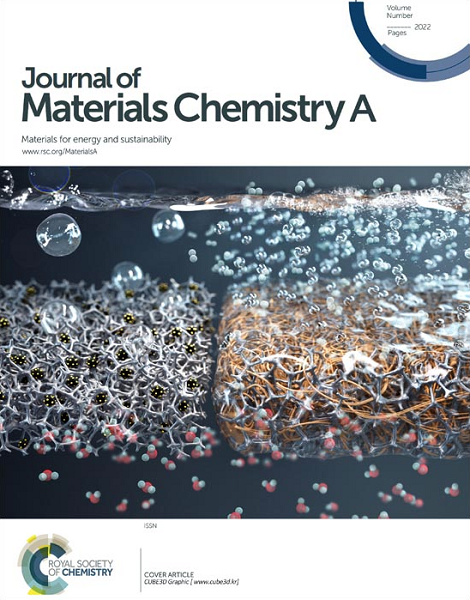Architecting Light for Catalysis: Emerging Frontiers in Plasmonic-Photonic Crystal Hybrids for Solar Energy Conversion
IF 9.5
2区 材料科学
Q1 CHEMISTRY, PHYSICAL
引用次数: 0
Abstract
Plasmonic photonic crystal (PPC) photocatalysts have emerged as a promising class of materials that integrate nanoscale light management with catalytic functionality for solardriven chemical conversions. By combining the electromagnetic field enhancement of plasmonic nanostructures with the photon manipulation capabilities of photonic crystals, PPCs effectively address key limitations of traditional semiconductor photocatalysts, including limited visible light absorption and rapid charge recombination. This review provides a comprehensive overview of recent advances in PPCs. It outlines the fundamental physical principles of plasmonics, photonic bandgap effects, and their synergistic interactions in hybrid systems. A range of fabrication strategies, from bottom-up self-assembly to top-down lithography, is presented with an emphasis on achieving structural precision and spectral alignment. The discussion also covers advanced design concepts such as hierarchical architectures, multifunctional plasmonic catalysts, and dynamically tunable photonic structures. These innovations have drastically improved photocatalytic performance under visible light, particularly in applications involving total water splitting, hydrogen evolution reaction, and carbon dioxide reduction. In addition, this review critically examines ongoing challenges, including achieving long-term stability, developing scalable fabrication techniques, and enhancing the utilization of light and photogenerated charge carriers. It concludes by proposing future research directions, ranging from the exploration of earth-abundant plasmonic materials to the integration of PPCs into functional device architectures. Overall, plasmonic photonic crystals offer a transformative strategy for solar fuel production by enabling precise control over light-matter interactions, and this review aims to support the rational design of next-generation hybrid photocatalysts for efficient and sustainable energy applications.用于催化的建筑光:用于太阳能转换的等离子体-光子晶体杂化的新兴前沿
等离子体光子晶体(PPC)光催化剂是一类很有前途的材料,它将纳米级光管理与太阳能驱动化学转化的催化功能结合在一起。通过将等离子体纳米结构的电磁场增强与光子晶体的光子操纵能力相结合,PPCs有效地解决了传统半导体光催化剂的关键局限性,包括有限的可见光吸收和快速的电荷重组。本文综述了PPCs的最新进展。它概述了等离子体、光子带隙效应及其在杂化系统中的协同相互作用的基本物理原理。一系列的制造策略,从自下而上的自组装到自上而下的光刻,提出了实现结构精度和光谱对准的重点。讨论还涵盖了先进的设计概念,如层次结构、多功能等离子体催化剂和动态可调光子结构。这些创新极大地提高了可见光下的光催化性能,特别是在涉及总水分解、析氢反应和二氧化碳还原的应用中。此外,本文还对当前面临的挑战进行了批判性的研究,包括实现长期稳定性,开发可扩展的制造技术,以及提高光和光生载流子的利用率。最后提出了未来的研究方向,从探索地球上丰富的等离子体材料到将PPCs集成到功能器件架构中。总的来说,等离子体光子晶体通过精确控制光与物质的相互作用,为太阳能燃料的生产提供了一种变革性的策略,本综述旨在支持下一代混合光催化剂的合理设计,以实现高效和可持续的能源应用。
本文章由计算机程序翻译,如有差异,请以英文原文为准。
求助全文
约1分钟内获得全文
求助全文
来源期刊

Journal of Materials Chemistry A
CHEMISTRY, PHYSICAL-ENERGY & FUELS
CiteScore
19.50
自引率
5.00%
发文量
1892
审稿时长
1.5 months
期刊介绍:
The Journal of Materials Chemistry A, B & C covers a wide range of high-quality studies in the field of materials chemistry, with each section focusing on specific applications of the materials studied. Journal of Materials Chemistry A emphasizes applications in energy and sustainability, including topics such as artificial photosynthesis, batteries, and fuel cells. Journal of Materials Chemistry B focuses on applications in biology and medicine, while Journal of Materials Chemistry C covers applications in optical, magnetic, and electronic devices. Example topic areas within the scope of Journal of Materials Chemistry A include catalysis, green/sustainable materials, sensors, and water treatment, among others.
 求助内容:
求助内容: 应助结果提醒方式:
应助结果提醒方式:


